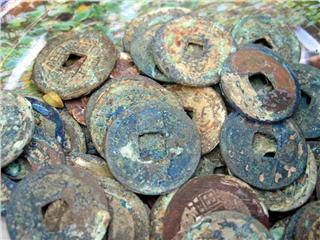Sat, 24 Jan 2015 . Last updated Thu, 25 Jun 2015 09:00









Music has become a part of our life and a special feature of Vietnamese culture. Sweet and simple melodies slowly come into kids’ dreams via mother’s lullabies. “Dan tranh”, “dan bau”, and “dan nguyet” are among traditional musical instruments that came into being a long time ago and their sounds can still stir our hearts today. Love for family and homeland owns its origin to the acquisition of traditional culture. Breast milk brings us up and traditional music nurtures our soul and countries to shaping our personal traits. It seems that simple sounds have been combined with people’s emotions to creative expressive melodies. Great poet Nguyen Du utilized the sound of the pipa to depict the whole gamut of Kieu’s emotions.
The “dan bau” (Vietnamese monochord) is considered one of the most special traditional music instruments. It can describe a range of feelings with only one string. It’s also called “Doc huyen cam” (one-string instrument) in Vietnamese. The music with a wide range of pitch is unforgettable. As said by a French poetess the sound of the “dan bau” truly reflects the characteristics of Vietnamese people who have rich soul despite their poverty.
While modern things penetrate our life rock the space and seem to approach all quiet moments, the sound of the “dan bau” brings us back to the roots. Few people know how this simple traditional musical instrument is made. Dao Xa village (Dong Lo – Ung Hoa - Hanoi) is known as a land with rich culture because it’s home to traditional musical instruments. Almost all households in the village made these instruments years ago, but now only several of them continue the craft. Elderly artisans in the village are afraid that their unique craft may fall into oblivion.
The tough time of Dao Xa village has gone. Thanks to locals’ better awareness of the market mechanism and the restoration of folk music, the craft of making traditional musical instruments here has come back. Musical instruments makers, who are farmer-artists, can make traditional musical instruments with the quintessence of their homeland.
Introducing traditional music instrument to the young is the best way to preserve and make traditional musical instruments closer to daily life and the mind of Vietnamese people. Vietnamese traditional musical instruments can be found in varied places from a rural area to a solemn area. The sound of traditional musical instruments played at Van Mieu Quoc Tu Giam leaves a strong impression on tourists to this ancient university.
The traditional musical instrument has become a tool for artists to show how rich Vietnam culture is. Our ancestor left us a treasure of musical instruments with typical sounds to depict our soul. Together with the development of modern musical instruments, people should attach greater importance to preserving traditional musical instruments and training artists. Vietnamese culture has a rich treasure of traditional musical instruments which has been developed together with the history of the nation. Artists, either musician or singers, use these musical instrument to show their feelings and their music can truly describe listeners’ emotions. Hopefully their efforts in preserving the sounds of traditional musical instruments in general and those made in Dao Xa village in particular in bustling life will soon pay off.
Source: VTC10 - NETVIET

 Đặt vé máy bay cho người Việt?
Bấm vào đây
Đặt vé máy bay cho người Việt?
Bấm vào đây
Our service uses cookies for technical, analytical and marketing purposes. See our Cookie và Privacy policies for more information. If you agree to this, just keep browsing.


